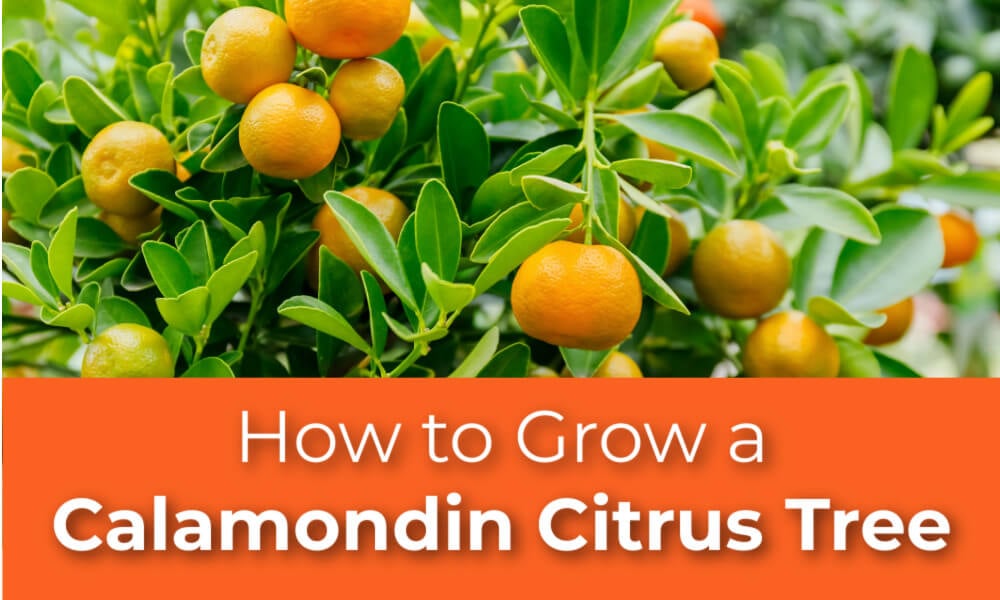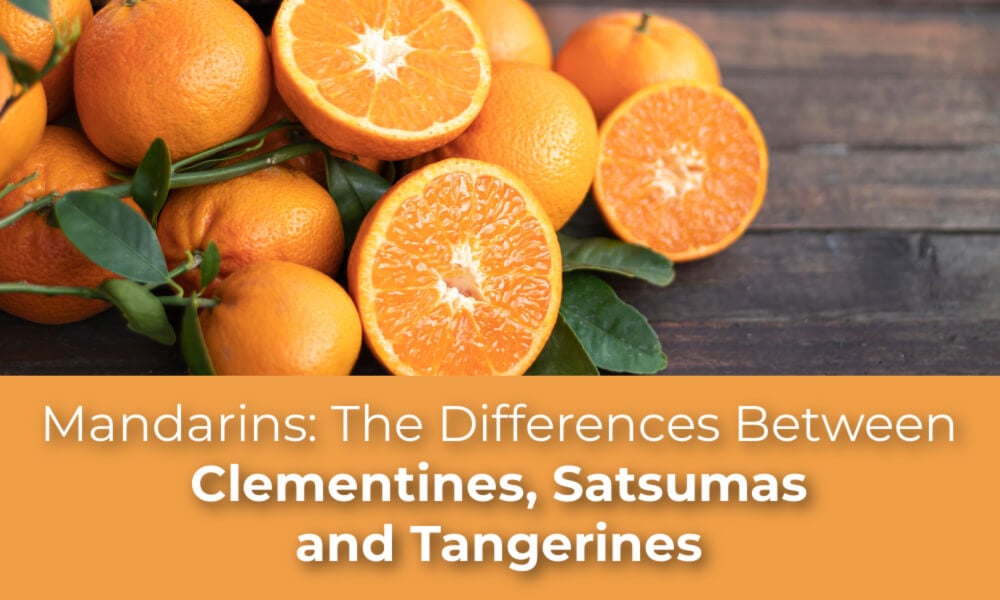Celebrating Citrus: Lemons, Limes, Oranges and More!
The Diversity of Citrus:
Citrus trees encompass a vast array of species and varieties, each offering unique flavors, colors, and characteristics. We love the zesty tang of lemons and the sweet juiciness of oranges. There truly is a citrus variety to suit every taste bud and garden landscape. Some popular citrus varieties include:
From the classic Washington Navel Orange to the exotic Sanguinelli Blood Orange, oranges are beloved around the world for their sweet flavor and versatility in both culinary and ornamental settings. Some nice classic flavored oranges that we offer are: Trovita, which is great for coastal and desert climates, Valencia, the best juicing orange and Midknight Valencia, its seedless cousin. For blood orange varieties, we have the deep dark red of the Moro Blood Orange, the bright flavored Bream Tarocco, and even an acidless blood orange that tastes like an orange creamsicle called Vaniglia Sanguigno. Our most popular orange to grow for home gardeners is the Cara Cara, an early-ripening navel orange with pink colored flesh.
Some prefer to grow sour oranges, which are mainly used for marmalades and extracts. They are not eaten fresh, as they have a very bitter flavor. They include Seville Orange, Chinotto Orange, Bergamot and Bouquet de Fleur Orange.
Lemons offer more than just tart taste and vibrant yellow hues. They are prized for their culinary versatility, adding a distinct and recognizable flavor to dishes and beverages. Our selection of lemons range from the mandarin hybrid Meyer Lemon to the classic and true Eureka Lemon. Or you can indulge in a little bit of Italian romance by growing Italian varieties at home like Santa Teresa Femminello and Genoa Lemon. They are larger than the average lemon, used to make Limoncello, and look stunning on the tree. One of our favorite lemons is the Lisbon Lemon, a classic, medium sized lemon with delicious flavor and little to no seeds. Our most unusual lemon is actually a sport from the Eureka Lemon: The Variegated Pink Lemon grows leaves and fruit with beautiful striping patterns, making this a stunning ornamental. The flowers are white and pink, and the new growth of the leaves emerges in purple. Due to its variegated leaves, the pink lemon is somewhat of a slower producer than other lemon trees, but the payoff is worth the wait. Wait until the fruit loses its stripes and becomes yellow and then cut it open- inside you will find a pink lemon!
Lime is one of my favorite flavors of all time, and the fruit always stays very close to my heart and my house. There is nothing like using your own ripe, juicy lime off the tree to make a delicious salad dressing, drink or dessert. If you love the acidity and flavor of limes, a lime tree is essential in your home garden. We love the classic flavors of the seedless Bearss Lime and Mexican Thornless and Mexican Key Lime, as well as its sister the Giant Key Lime. If you want to try an eastern lime that has tons of flavor and is also a beautiful tree, grow the ever-bearing Rangpur Lime, which actually turns orange when it is ripe. In my opinion, it is the most underrated variety that we grow. The flavor of the Rangpur lime is out of this world! It is like a sour mandarin-lime with a hint of floral undertones. Next to the Bearss, our most popular varieties are unique looking trees that grow unique and hard to find fruit. They are the Australian Finger Lime tree and the Japanese Yuzu. The Australian Finger Lime is a thorny, bushy tree with small leaves that grows unusual and flavorful finger-shaped limes. These limes have no visible juice, but instead tiny vesicles that are filled with a tart lime flavored juice that burst when you bite or squeeze them. They are great for the gardening gourmand who loves experimenting with flavors and textures in food. Yuzu is one of our most in-demand citrus varieties. The fruit is very hard to find in the US, and can not be imported from Japan. The Yuzu is used mainly for its zest and juice, and is not typically eaten fresh. It is very seedy and looks like a yellow mandarin when it is ripe. The flavor is tart, citrusy with strong floral undertones. A similar variety to the Yuzu that is easier to grow and very ornamental and prolific is the Sudachi Lime. This is another Japanese lime that is smaller than the Yuzu, but with an intense delicious flavor. You can use them when they are green or yellow, and the fruit hangs very nicely for a long time in rows on the tree.
Grapefruit enthusiasts have a wide array of varieties to choose from, each offering its own unique blend of flavor, texture, and size. Among these, the warm weather Rio Red stands out for its vibrant hue and rich, sweet-tart taste, making it a popular choice for fresh eating or juicing. Cocktail grapefruit, on the other hand, presents a charming petite size with a mild flavor profile, perfect for snacks or garnishing dishes. For those seeking a sweeter experience, the Valentine Pomelo, a combination of a Pomelo, a mandarin, and a blood orange, delivers a pleasantly mild flavor and a hint of floral aroma, making it a favorite among grapefruit lovers. For a visually striking option, the Star Ruby grapefruit boasts an intense, deep red flesh and a bold, tangy taste that adds appeal to any breakfast spread. Similarly, the Melogold offers delightful grapefruit flavor, making it a versatile addition to salads or fruit bowls. The Oroblanco Grapefruit , a great choice for coastal areas, produces sweet seedless fruit even in areas of low summer heat. Moving beyond traditional grapefruit, the Chandler Pomelo and Tahitian Pomelo present larger fruits with a sweeter taste and mild acidity, perfect for enjoying on their own. Whether you prefer classic grapefruit flavor or crave a unique twist, there's a grapefruit variety to suit every palate and preference.
Mandarins, renowned for their easy-to-peel skin and sweet, juicy flesh, offer an array of flavors and characteristics. Among these, the Clementine Mandarin stands out with its vibrant orange skin, a balance of sweetness and acidity, and low seed nature, making it a favorite for snacking and lunchboxes. The W. Murcott Mandarin, often known as the Honey Murcott or Murcott Tangor, boasts a rich, honey-like sweetness coupled with a hint of tartness, making it a popular choice for fresh consumption and juicing. Kishu Mandarins, petite in size yet bursting with intense flavor, are prized for their exceptional sweetness and thin, easily peeled skin, making them a delightful treat for both children and adults. Meanwhile, the Owari Satsuma, originating from Japan, offers a distinctive sweetness with a touch of tanginess, accompanied by a loose, easy-to-peel rind, making it ideal for enjoying fresh or adding to salads. Lastly, the stunning, dark orange Page Mandarin, a hybrid of Minneola Tangelo and Clementine, has a complex flavor profile characterized by a blend of sweetness and acidity, perfect for adding zest to salads or enjoying as a refreshing snack. Each variety offers its own unique charm and flavor, enriching the mandarin experience for citrus lovers worldwide.
Kumquats, often referred to as "the little gold gems of the citrus world," offer a unique combination of sweet and tangy flavors, along with the bonus of being entirely edible. Among the various varieties, the Nagami Kumquat is perhaps the most well-known, featuring oval-shaped fruits with a tart, zesty flavor and a slightly bitter rind, making them perfect for preserves and candying. Fukushu Kumquats, originating from Japan, boast round fruits with a sweeter taste and a thinner, more delicate rind, ideal for fresh consumption or adding a citrusy zest to dishes. Meiwa Kumquats offer a sweeter and less tart taste, making them suitable for eating fresh or incorporating into desserts and cocktails. The Variegated Centennial Kumquat, prized for its ornamental appeal with variegated foliage and striped fruits, delivers a delightful balance of sweetness and acidity, perfect for adding a pop of color and flavor to culinary creations. Calamansi, a hybrid between a kumquat and a mandarin, features small, round fruits with a tart flavor profile, commonly used in Filipino cuisine for its distinctive citrusy taste. Eustis Limequat, a cross between a kumquat and a key lime, presents small, oval-shaped fruits with a tart, acidic flavor reminiscent of limes, ideal for adding a citrusy punch to beverages and dishes. Lastly, the Indio Mandarinquat, a hybrid of a mandarin and a kumquat, combines the sweet, juicy flesh of mandarins with the tartness of kumquats, resulting in a unique flavor profile perfect for enjoying fresh or using in marmalades and preserves. Each variety of kumquat offers its own special charm and culinary versatility, adding a burst of citrusy goodness to any dish.
These are just a few examples of the citrus treasures waiting to be discovered. Each variety has its own unique flavor profile, growing requirements, and seasonal characteristics, adding diversity and excitement to your citrus collection.
The Joy of Growing Citrus Trees:
Growing citrus trees is a rewarding hobby and also a therapeutic and educational experience. Watching a small tree grow into a flourishing tree, covered with fragrant blossoms and then juicy fruits, is a testament to the wonders of nature. Here are some reasons why cultivating citrus trees brings joy to gardeners of all skill levels:
1. Connection with Nature: Tending to citrus trees allows us to reconnect with the rhythms of nature, observing the changing seasons and nurturing life from flower to harvest.
2. Culinary Adventures: Freshly picked citrus fruits add a burst of flavor to culinary creations, from tangy lemon tarts to refreshing orange salads, inspiring creativity in the kitchen.
3. Fragrant Blossoms: Citrus trees adorn gardens with their fragrant blossoms in the spring, filling the air with a delightful aroma that uplifts the spirit and attracts pollinators such as bees and butterflies. Varieties like Chinotto Sour Orange and Bouquet de Fleur offer an unparalleled world of orange blossoms.
4. Health Benefits: Citrus fruits are packed with essential vitamins, antioxidants, and fiber, offering a wide range of health benefits, from boosting immunity to supporting heart health.
5. Sustainable Living: Growing citrus trees at home promotes sustainability by reducing food miles and minimizing packaging waste associated with store-bought produce.
Tips for Successful Citrus Cultivation:
While citrus trees are relatively easy to grow, they do require proper care and attention to thrive. Here are some essential tips for successful citrus cultivation:
1. Sunlight: Citrus trees thrive in full sun, so choose a sunny location in your garden with at least 6-8 hours of southfacing sunlight per day.
2. Soil and Drainage: Plant citrus trees in well-draining soil enriched with organic matter. Avoid waterlogged conditions, as citrus roots are susceptible to root rot. For container planting, we recommend our Primo Potting Mix, an easy DIY mix that is especially formulated for citrus trees.
3. Watering: Keep the soil evenly moist, especially during hot and dry weather. Water deeply but infrequently, allowing the soil to partially dry out between waterings.
4. Fertilization: Feed citrus trees regularly with a balanced fertilizer, such as Romeo Fertilizer or G&B Organics Fruit and Citrus Tree Fertilizer, to promote healthy growth and fruit production.
5. Pruning: Prune citrus trees annually to remove dead or diseased branches, improve air circulation, and maintain a desirable shape. Pruning also stimulates new growth and fruit development.
Growing citrus trees is a delightful journey filled with discovery, flavor, and beauty. Whether you're savoring the juicy sweetness of an orange or admiring the delicate blossoms of a lemon tree, citrus adds joy and vitality to any garden. So, let's celebrate citrus and embrace the wonders of growing these incredible fruit trees in our gardens.






















